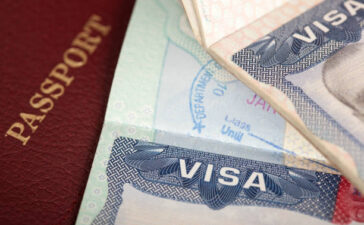For aspiring immigrants, Canada offers an array of opportunities. One of the most efficient routes to gain permanent residence in Canada is through the Express Entry system, an online system created by Immigration, Refugees and Citizenship Canada (IRCC) to manage applications for permanent residence from skilled workers. This article provides a comprehensive guide to understanding the Express Entry system and elucidates the process of applying.
Advertisement
Understanding the Express Entry System
Introduced in 2015, the Express Entry system serves as a fast-track method for skilled immigrants to secure permanent residence in Canada. It operates on a points-based system, officially referred to as the Comprehensive Ranking System (CRS). Candidates receive scores based on criteria such as age, education, language proficiency, and work experience. As an applicant, your aim is to accrue as many points as possible to heighten your chances of receiving an Invitation to Apply (ITA) for permanent residence.
How to Apply through the Express Entry System
Embarking on your Express Entry journey encompasses several key steps:
Step 1: Assess Your Eligibility The initial step is to ascertain if you qualify for one of the federal economic immigration programs that fall under the Express Entry system: the Federal Skilled Worker Program (FSWP), Federal Skilled Trades Program (FSTP), or Canadian Experience Class (CEC). The Come to Canada tool, an online tool provided by IRCC, can aid in determining your eligibility.
Step 2: Create Your Express Entry Profile Once confirmed eligible, your subsequent step is to establish an online Express Entry profile. In this profile, you will supply information about your skills, work experience, language proficiency, education, and other relevant details for assessment.
Step 3: Receive Your CRS Score Upon completion of your profile, you will be placed into the Express Entry pool and assigned a CRS score. You will then await the routinely conducted Express Entry draws, during which the highest-ranking candidates receive invitations to apply for permanent residence.
Advertisement
Step 4: Apply for Permanent Residence On receipt of an ITA, you have 60 days to submit a complete application for permanent residence. IRCC endeavours to process most applications within six months from the date of submission.
After the submission of your application, you await the final decision. If approved, you will receive a Confirmation of Permanent Residence (COPR) and a permanent resident visa (if you’re from a country that requires a visa).
Navigating the Comprehensive Ranking System (CRS)
A crucial part of the Express Entry system, the CRS, evaluates and assigns scores to your profile based on several factors. Understanding how this system functions is essential to maximizing your points and enhancing your chances of receiving an ITA.
The CRS scores are derived from four main sections: human capital factors, spouse or common-law partner factors, skill transferability factors, and additional points for factors such as a provincial nomination, a sibling living in Canada, or French language proficiency.
Human Capital Factors Factors such as age, education, language proficiency, and Canadian work experience fall under this category. The higher your education level, your proficiency in English or French, and your work experience in Canada, the more points you can earn.
Spouse or Common-law Partner Factors If you are immigrating with a spouse or common-law partner, their age, education, language proficiency, and Canadian work experience can earn you additional points.
Skill Transferability Factors These factors assess combinations of your language skills, education, foreign work experience, and Canadian work experience.
Additional Points Extra points can be earned for having siblings living in Canada as citizens or permanent residents, strong French language skills, or having arranged employment or a provincial nomination. A provincial nomination earns you an additional 600 points, giving a significant boost to your CRS score.
If your CRS score falls short of the requirement to receive an ITA, there are several strategies to improve your score. These include improving language scores, gaining more work experience, pursuing higher education, obtaining a job offer from a Canadian employer, or securing a provincial nomination.
Processing Your Express Entry Application
Once you have submitted your complete application after receiving an ITA, it will undergo processing by the IRCC. You might be required to provide additional documents or attend an interview. During the waiting period, you can check the status of your application online.
Finalizing Your Immigration
Upon approval of your application, you’ll receive your Confirmation of Permanent Residence and immigrant visa. When you arrive in Canada, you will need to present these documents, along with your valid passport, to the immigration officer at your port of entry. They will verify your documents and ask you a few questions to confirm that you still meet the criteria for immigration.
While the Express Entry process might seem intricate, it can be navigated with patience and precision. Accurate representation of your skills and experiences is critical as misrepresentation can lead to penalties that could disrupt your immigration journey. Considering the potential complexities of the Express Entry system, you might want to consider seeking professional consultation to ensure a comprehensive understanding of the process.
This guide serves as a starting point. However, always refer back to the official IRCC guidelines and resources to aid your journey to becoming a Canadian permanent resident through the Express Entry system. With careful attention to detail, a structured approach, and proactive planning, the Express Entry system could be your gateway to your new life in Canada.
Understanding the Federal Skilled Worker (FSW) Program
Among the Express Entry aligned programs, the Federal Skilled Worker Program (FSWP) is designed for skilled professionals with foreign work experience who aspire to reside in Canada permanently. The FSWP uses a points-based system, wherein you are required to score a minimum of 67 points out of 100 on an assessment grid that takes into account six selection factors: education, language skills, work experience, age, arranged employment in Canada, and adaptability.
Understanding the Federal Skilled Trades Program (FSTP)
The Federal Skilled Trades Program (FSTP) is geared toward qualified tradespeople in occupations such as electricians, carpenters, plumbers, welders, among others. To qualify, you must have at least two years of full-time work experience in a skilled trade within the last five years and meet the job requirements for that skilled trade as set out in the National Occupational Classification (NOC).
Understanding the Canadian Experience Class (CEC)
The Canadian Experience Class (CEC) is an immigration category for foreign workers in Canada who wish to become permanent residents. The CEC is ideal for individuals who have already established themselves in the Canadian workforce and society. The primary requirement is having at least one year of skilled work experience in Canada within three years of your application.
The Role of Provincial Nominee Programs (PNPs) in Express Entry
Provincial Nominee Programs (PNPs) offer another pathway to Canadian permanent residence. Provinces and territories participate in the Express Entry system through what’s called “enhanced” nominations, which effectively allows them to nominate individuals in the Express Entry pool and award them 600 additional CRS points.
Post-Approval: Preparing for Your Move to Canada
After your application is approved and you’ve received your immigrant visa, it’s time to prepare for your move. This involves organizing your financial affairs, researching your new community, finding housing, and making travel arrangements.
Upon arrival in Canada, you’ll need to apply for several important documents, such as your Social Insurance Number (SIN), which allows you to work and access government programs and benefits. You will also need to enrol in a healthcare plan, as Canada boasts an extensive public health system.
The Benefits of Being a Permanent Resident
As a permanent resident of Canada, you will enjoy many benefits. These include access to most of the social benefits Canadian citizens receive, including health care coverage, protection under Canadian law and the Canadian Charter of Rights and Freedoms, and the ability to apply for Canadian citizenship once you meet the requirements.
To maintain your status, you must live in Canada for at least two years within a five-year period. However, given the economic opportunities, inclusive society, and high quality of life, most permanent residents choose to make Canada their forever home.
Conclusion
While the Express Entry system may seem complex, it offers a structured and efficient pathway for skilled individuals around the world to realize their Canadian immigration dreams. Remember, each application is unique, and patience, diligence, and a thorough understanding of the system will enhance your chances of success.
Whether you’re a skilled professional, tradesperson, or already have Canadian work experience, the Express Entry system could be your pathway to a bright future in Canada. As you embark on this exciting journey, we wish you the best of luck. Welcome to the start of your Canadian dream!




